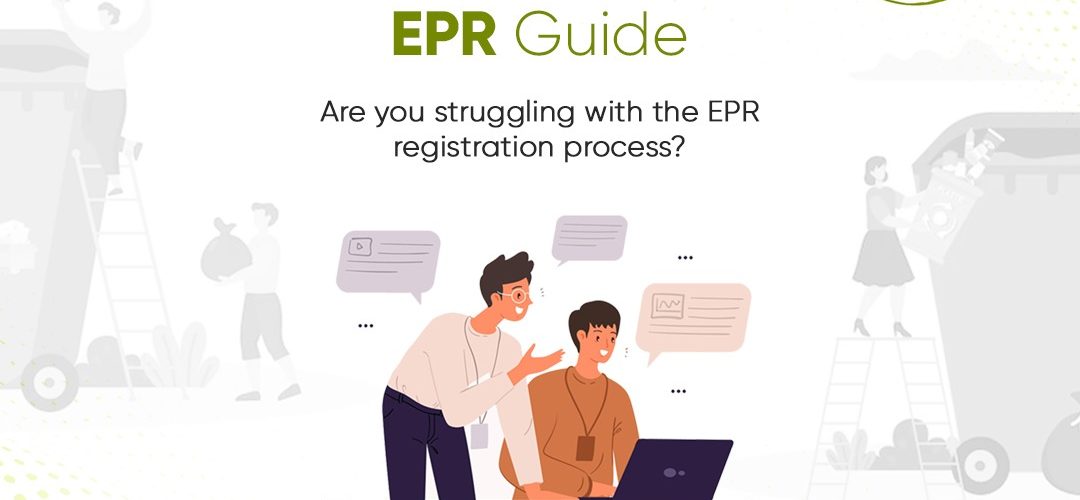Extended Producer Responsibility (EPR) is a regulatory framework that holds manufacturers and producers accountable for the entire lifecycle of their products, including end-of-life management. EPR regulations are designed to promote sustainability and reduce waste by incentivizing businesses to design more sustainable products and manage the end-of-life of their products responsibly. In this guide, we will provide step-by-step instructions for businesses to register for EPR regulations and streamline the process.
Step 1: Identify the Relevant Regulatory Body
The first step in registering for EPR regulations is to identify the relevant regulatory body. This may vary by country or region. In the United States, for example, the Environmental Protection Agency (EPA) oversees EPR regulations. In Europe, the European Union (EU) has established the Waste Electrical and Electronic Equipment (WEEE) directive to regulate electronic waste.
Step 2: Determine Your Obligations
Once you have identified the relevant regulatory body, you need to determine your obligations under EPR regulations. This will vary depending on the type of products you produce or import. In general, businesses that produce or import products that are likely to become waste are required to register and comply with EPR regulations.
Step 3: Complete the Registration Process
The registration process will vary by country and regulatory body. Generally, businesses need to complete an application process and provide information on their products and packaging, as well as their end-of-life management practices. This may include providing data on the weight and composition of their products and packaging, as well as information on their recycling and disposal practices.
Step 4: Implement Sustainable Product Design
Complying with EPR regulations requires businesses to take responsibility for the entire lifecycle of their products, including end-of-life management. To minimize their impact on the environment, businesses should consider implementing sustainable product design principles. This may include using eco-friendly materials, designing products that are easier to recycle or dispose of, and reducing the amount of packaging they use.
Step 5: Collaborate with Other Businesses
Collaborating with other businesses can help reduce the cost of complying with EPR regulations. Businesses can share the cost of end-of-life management and explore innovative solutions such as recycling and reusing materials. This can help reduce waste and promote sustainability.
Step 6: Monitor and Report
To ensure ongoing compliance with EPR regulations, businesses need to monitor their end-of-life management practices and report regularly to the relevant regulatory body. This may include providing data on the amount of waste generated, the amount of waste recycled, and the amount of waste disposed of.
Conclusion:
EPR regulations are an important regulatory framework designed to promote sustainability and reduce waste. By taking responsibility for the entire lifecycle of their products, businesses can design more sustainable products and manage the end-of-life of their products responsibly. Registering for EPR regulations can be a complex process, but by following these step-by-step instructions, businesses can streamline the process and ensure ongoing compliance.
FAQs:
What types of products are typically covered under EPR regulations?
EPR regulations typically cover products that are likely to become waste, such as electronics, batteries, packaging, and appliances.
What are the benefits of complying with EPR regulations?
Complying with EPR regulations can help businesses promote sustainability, reduce waste, and improve their reputation with consumers who value environmentally responsible products and practices.
Is EPR registration mandatory for all businesses?
The requirement to register for EPR regulations may vary by country or region. In some cases, only certain types of businesses may be required to register, while in others, it may be mandatory for all businesses that produce or import products that are likely to become waste.
How can businesses ensure ongoing compliance with EPR regulations?
To ensure ongoing compliance with EPR regulations, businesses need to monitor their end-of-life management practices and report regularly to the relevant regulatory body. They may also need to update their sustainability practices as new regulations are introduced.
Are there any penalties for non-compliance with EPR regulations?
Yes, there may be penalties for non-compliance with EPR regulations, including fines, legal action, and damage to a business’s reputation. It is important for businesses to comply with regulations to avoid these potential negative consequences.



